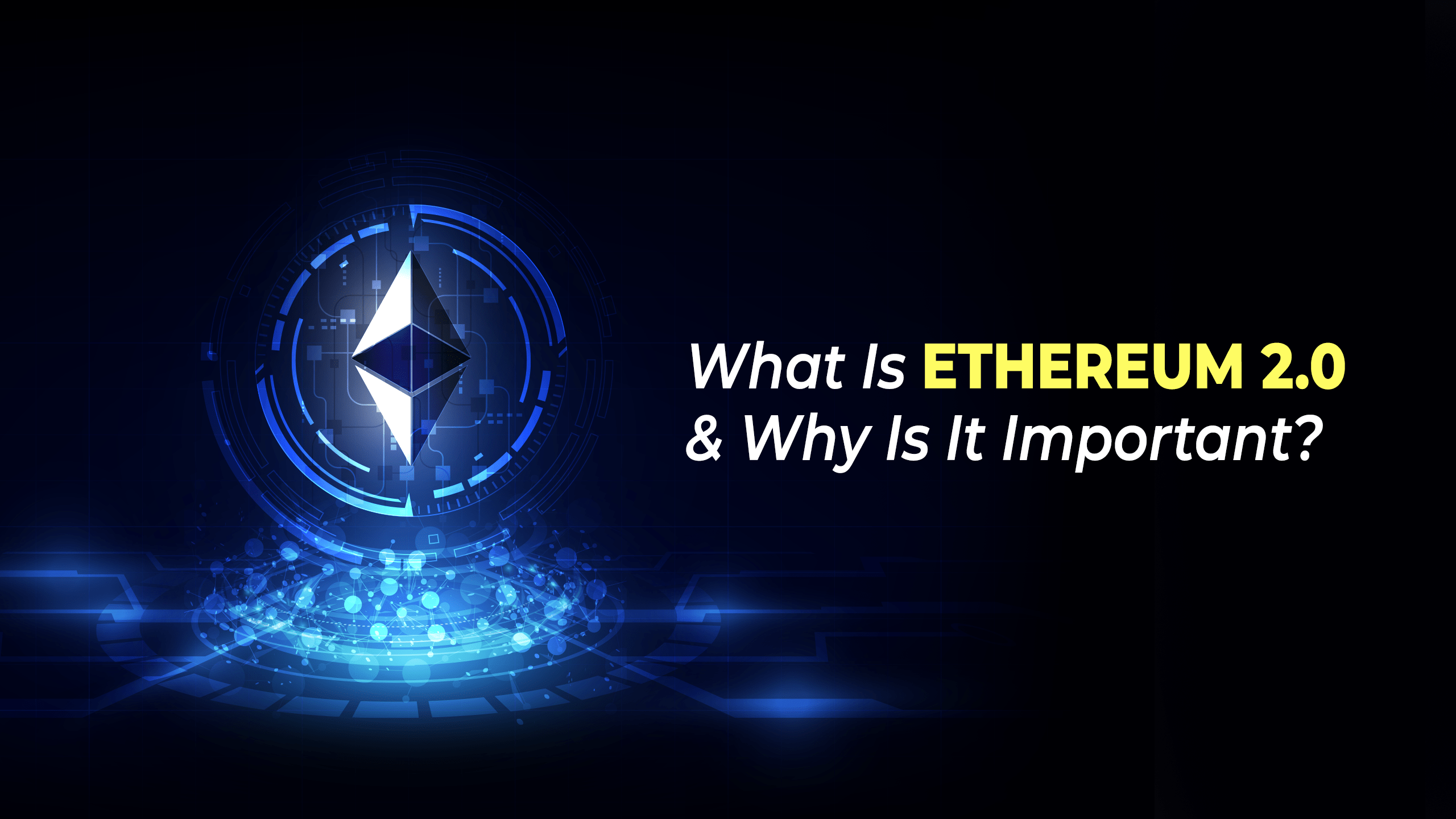It is expected that Ethereum 2.0 will significantly enhance the operating efficiency and user interface of the Ethereum (ETH) network. Proof of Stake (PoS) was adopted, shard chains were introduced, and a beacon chain was at the center. In the future, everything and more will be implemented if a meticulously planned strategy is implemented.
There is, however, much more to come. Bitcoin’s most famous cryptocurrency is ether. This makes it essential to learn about Ethereum 2.0 and how it will affect the crypto sphere as a whole. In this blog, we will discuss Ethereum 2.0’s future and provide an overview of it.
Let’s get started.
What is Ethereum 2.0?
Scalability, security, and decentralization are all improved in Ethereum 2.0. It uses sharding to divide the workload among multiple nodes, so it can process transactions more efficiently. As a result, blockchain-based applications should be able to handle the growing demand for transactions on the network.
Furthermore, Ethereum 2.0 uses an energy-efficient and secure PoS consensus algorithm to enhance the network’s security. Besides cross-shard communication, the upgrade also introduces eWASM, a virtual machine that should enhance Ethereum’s flexibility and programmability.
What is Ethereum 2.0?
Ethereum 2.0 differs from Ethereum in the following ways:
Consensus Algorithm
By using a proof-of-work consensus algorithm, miners validate and add blockchain transactions. Energy is used in this process, and it is susceptible to centralization.
Users can validate transactions and add them to the blockchain by staking their Ethereum (i.e., holding some amount of Ethereum as collateral) using Ethereum 2.0’s proof-of-stake consensus algorithm. There is a greater potential for energy efficiency and less vulnerability to centralization with this method.
Scalability
The scalability of Ethereum is one of its main limitations. Due to Ethereum’s limited transaction capacity and slow processing speed, transactions can be expensive during high-demand periods.
With Ethereum 2.0, sharding allows a network to process transactions in parallel by dividing them into smaller shards. So many more transactions can be processed per second on the Ethereum network as a result.
Security
Through the implementation of advanced cryptographic techniques and a more secure consensus algorithm (PoS), Ethereum 2.0 aims to improve the security of the Ethereum network.
Efficiency
Through the implementation of more efficient algorithms and data structures, Ethereum 2.0 aims to improve the efficiency of the Ethereum network.
Upgrade Process
The Ethereum network is being upgraded as part of Ethereum 2.0. In December 2020, Phase 0 launched, introducing the Beacon Chain, the network’s backbone. Sharding and smart contracts will be introduced in future steps.
How will Ethereum 2.0 develop in the future?
It introduces several new features and improvements to the Ethereum network, including support for sharding, which will make transactions more efficient and permit a higher volume of transactions.
Several phases are being developed for Ethereum 2.0, and Phase 0 (also known as “Beacon Chain”) will launch on December 1, 2020. Within the next few years, Phase 1 will implement sharding in several stages.
There is no certainty that Ethereum 2.0 will improve Ethereum’s scalability, security, or efficiency in the future.
Providing developers and users with an attractive platform for Ethereum 2.0 could drive adoption and increase its value. Nonetheless, the success of Ethereum 2.0 is not guaranteed and depends on several factors, including the delivery of promised improvements by the Ethereum development company and the level of adoption by the community at large.
The 3 Phases of Ethereum 2.0
It is time to learn about the different phases of Ethereum 2.0 now that you know the difference between Ethereum 2.0 and Ethereum. So, let’s see what they are.
Phase 0: Beacon Chain
ETH 2.0 is divided into three phases, with Beacon Chain serving as Ethereum’s backbone. By coordinating the activities of validators, such as voting on the network’s state and participating in consensus, the Beacon Chain maintains the registry of validators.
Beacon Chain uses Proof of Stake (PoS) as its new consensus algorithm. PoS works differently than Ethereum’s current Proof of Work consensus algorithm, which rewards validators for participation by staking their ETH. Due to this, Ethereum’s network is expected to be more secure and decentralized, as well as consume less energy.
hase 1: Shard Chains
During Ethereum 2.0’s second phase, shard chains will be introduced, which are parallel blockchains that will enhance the network’s transaction speed. The Beacon Chain coordinates the activities of each shard chain, which processes a portion of the web’s transactions.
Cross-shard transactions are also introduced in Phase 1, allowing transactions between shard chains. By supporting more transactions and supporting a wider range of use cases, it is expected to enhance Ethereum’s scalability and flexibility.
Phase 2: Execution Environment
It introduces the Ethereum 2.0 execution environment, where DApps and smart contracts can be executed.
During this phase, account abstraction is also introduced, so users can interact with the Ethereum network via smart contracts and hardware wallets.
As Ethereum’s network progresses through Phase 2, it will become even more scalable and secure, and it will be able to support a broader range of use cases and applications.
Wrapping It Up!
Ethereum 2.0 addresses scalability, security, and other issues with the Ethereum network. As part of the upgrade, the network will be upgraded in phases that will each introduce new features and improvements. It has been estimated that Ethereum 2.0 will bring significant benefits to its users and network through the Beacon Chain, Shard Chain, and execution environment, a key component of Ethereum 2.0.
 +91 95109 87700
+91 95109 87700 +44 20 3290 3710
+44 20 3290 3710



